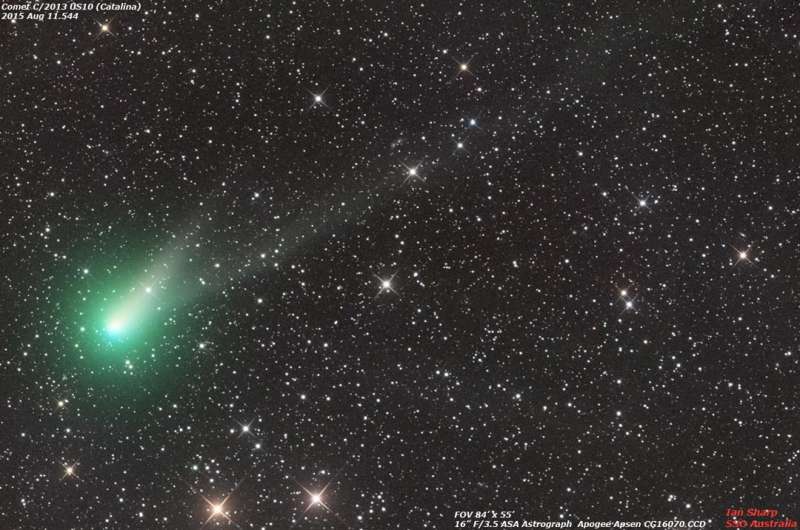
|
Credit & Copyright: Ian Sharp
Explanation:
Will Comet Catalina become visible to the unaided eye?
Given the unpredictability of comets, no one can say for sure, but it seems like
a good bet.
The comet was discovered in 2013 by observations of the
Catalina Sky Survey.
Since then,
Comet C/2013
US10 (Catalina)
has steadily brightened and is currently brighter than 8th
magnitude, making
it visible with binoculars and
long-duration camera images.
As the
comet
further approaches the inner Solar System it will surely
continue
to intensify,
possibly becoming a naked eye object sometime in October and
peaking sometime in late November.
The comet
will reside primarily in the skies of the southern hemisphere until mid-December,
at which time its highly inclined orbit will bring it quickly into northern skies.
Featured above,
Comet Catalina was imaged
last week sporting a
green coma and
two growing tails.
|
January February March April May June July August September October November December |
| |||||||||||||||||||||||||||||||||||||||||||||||||||||||
NASA Web Site Statements, Warnings, and Disclaimers
NASA Official: Jay Norris. Specific rights apply.
A service of: LHEA at NASA / GSFC
& Michigan Tech. U.
Based on Astronomy Picture
Of the Day
Publications with keywords: comet
Publications with words: comet
See also:
- APOD: 2025 September 30 Á Comet Lemmon Brightens
- APOD: 2025 September 29 Á Two Camera Comets in One Sky
- APOD: 2025 September 26 Á A SWAN an ATLAS and Mars
- APOD: 2025 September 18 Á Comet C/2025 R2 SWAN
- APOD: 2025 September 16 Á New Comet SWAN25B over Mexico
- APOD: 2025 July 7 Á Interstellar Comet 3I ATLAS
- Comet C/2025 F2 SWAN
